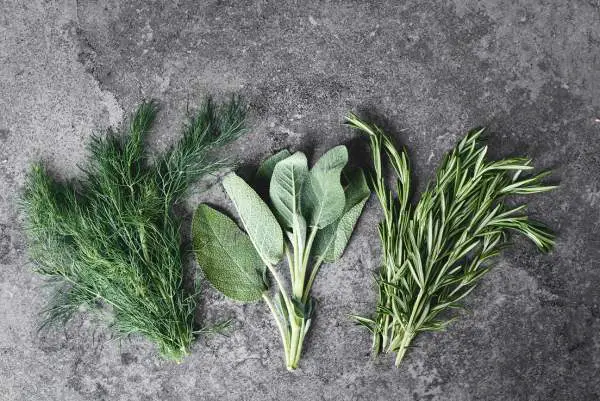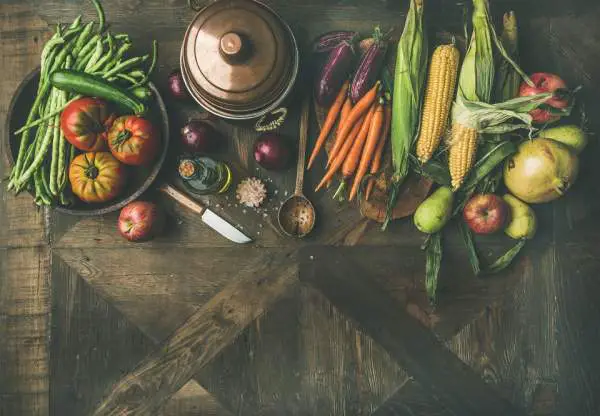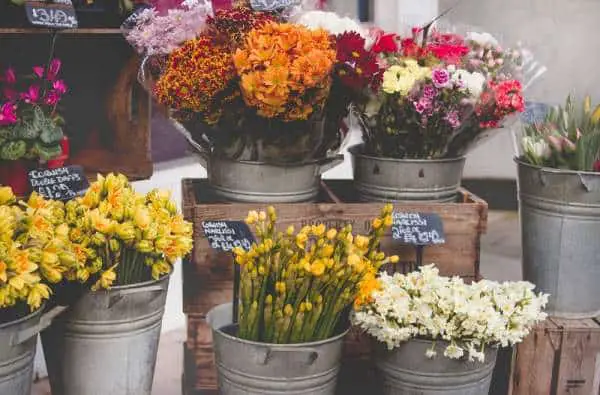It doesn’t matter if you are growing herbs for culinary purposes or medicinal, hydroponics is a great way to grow them. There are some reasons for doing so, and the first is that they grow faster. You can then add to this they come with more aroma and flavor than soil-grown counterparts can. Research even shows, hydroponic herbs contain up to 40% more aromatic oils.
Not only this, but growers can have a range of herbs growing that they could otherwise struggle to grow in their region.
See below our picks for the 10 best hydroponic herbs that are easy to grow:
- Basil
- Chamomile
- Rosemary
- Oregano
- Cilantro
- Anise
- Dill
- Catnip
- Parsley
- Thyme
- Chives
- Mint
Like all plants, herbs care about temperature, light, and water. If you swing too low or too high in either direction for any of these herbs, they will end up dying. Growing herbs using hydroponics helps you to keep yielding herbs no matter the season or the weather. Hydroponic growing just takes up less space and reduces water consumption.
While all herbs can be easy to grow, here are the top eight herbs to grow in a hydroponic system. We’ll go over the basics and the benefits of each one.
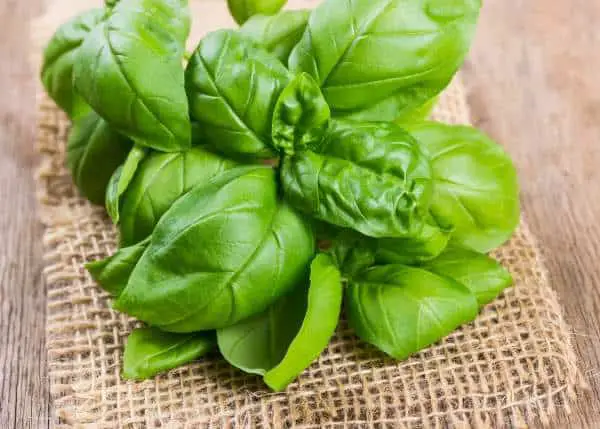
Basil
Basil is a popular choice for hydroponics because this herb is ideal when used fresh to hold on to the aroma and flavor. Dried basil loses these qualities. Therefore, it’s not uncommon to see restaurants and greenhouses using a hydroponics system for their basil herbs.
Altogether, there are 150 different species of basil, but the most common are:
- Sweet Basil
- Genovese Basil
- Thai Sweet Basil
- Purple Basil
- Lemon Basil
- Lime Basil
- Lettuce Basil
- Spicy Basil
You can plant basil two ways, by germinating the seeds, or by planting cuttings, which form their roots within a week’s time. Basil is a warm-weather herb, so it’s best to maintain a temperature of between 70 – 80 Fahrenheit. Rockwool blocks are the most common medium used with growing basil in hydroponics. You can though use peat moss, coco coir, perlite, and vermiculite, although these need sterilizing before use.
You should note that Pythium is a threat to basil seedlings. What is Pythium? Pythium is a fungus that will attack and spread disease against many herbaceous crops. The best way to avoid Pythium or other damping-off pathogens is to take great care with assuring your growing media surface is not too damp.
Once you come to harvest basil, you can remove the top 1/3 to 2/3’s of the upper foliage. The plant will continue to grow this back, where you can cut again. Basil can regrow up to 2 to 3 times before it’s recommended to replace the plant altogether and start fresh.
It is advisable to just cut the amount of basil you require, this saves the worry of trying to keep it in a good condition. Once you pick basil, the shelf life of basil is only a few days, so it can be better to leave it growing on the plant until required. You can check this video to see how easy it can be to grow perpetual basil in a hydroponic system.
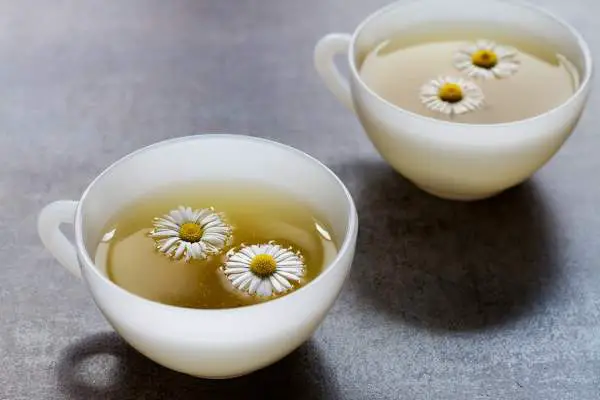
Chamomile
If you’re a big fan of tea, you might like to know that you can grow your own chamomile, indoors with hydroponics. Chamomile has many amazing antioxidant properties that have been shown to lower the risk of diseases like heart disease and cancer. They also help with fighting insomnia and poor digestion issues.
Many will use a floating seed tray to help germinate chamomile seeds. After the seedlings grow to about 2 inches, you’ll want to get rid of the weakest ones so that there is only one strong seedling per cell in the tray. Germination of chamomile seeds can take up to 1-2 weeks. It’s recommended that chamomile receives up to 16 hours of light daily.
As it pertains to pH ranges, chamomile has broad compatibility. It can range anywhere from 5.6 to 7.5. Ideally, you’ll probably want to hit in the middle at 6.5 for optimal growing results. After about 8 weeks, you’ll be ready to harvest your chamomile flowers.
You can harvest the flowers by cutting up to 3 inches of the stem off and then drying them on a cloth in a shady area. You could make replanting much simpler by not harvesting all the flowers, which allows them to re-seed themselves. Store your chamomile in an airtight container in a dark and cool area for preservation. To see more of the Chamomile health benefits, you can read more here.
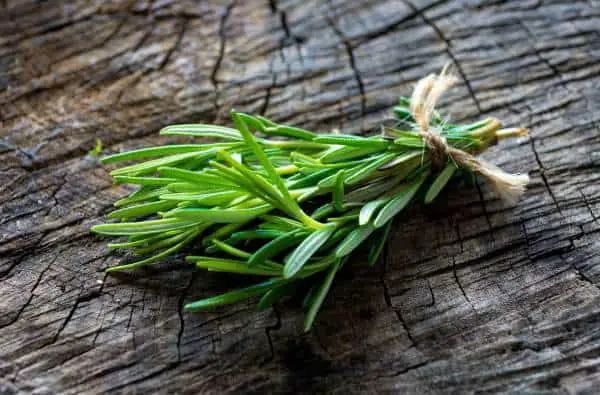
Rosemary
This Mediterranean herb is evergreen, with needle-like leaves. The herb can dawn white, pink, purple, or sometimes blue flowers. You can use Rosemary as an aid for a wide variety of problems such as
- Digestion issues
- Heartburn
- Loss of appetite
- Cough
- Headache
- High blood pressure
- Low blood pressure
- Toothache
- Insect repellent
- And More
Growing rosemary hydroponically compared to other herbs can prove much slower. You can expect a harvest time of up to 12 weeks, and the yields from seeds are always very low. Growing them hydroponically still proves much more efficient.
These herbs are sensitive to fungal infections, powdery mildew, and mites. An NFT hydroponic setup is the most ideal for this herb, and they should be exposed to temperatures ranging from 70 degrees Fahrenheit to 85 degrees Fahrenheit max.
Here are some quick tips for growing rosemary hydroponically.
- Keep the pH range between 5.5-7.0
- Humidity levels should remain average.
- Expose the herb to 11 hours of daylight as a minimum
- You can harvest 2-3 times per sowing, this can also be done all year round.
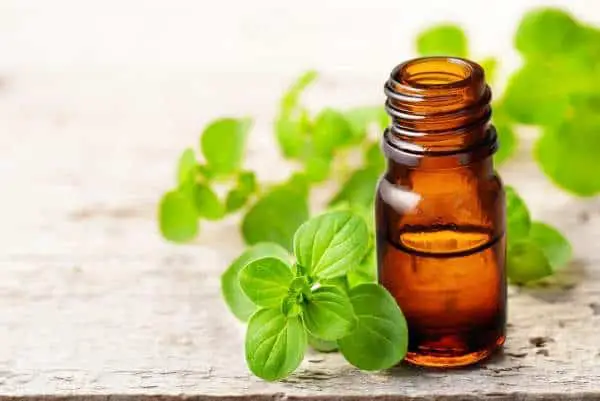
Oregano
Oregano is a part of the mint family and they have used this herb for thousands of years for cooking and medicinal needs. The ancient Greeks used oregano to treat GI disorders, menstrual cramps, urinary tract infections, skin conditions, and dandruff. They have studied oregano many times for its antimicrobial activity that wards off Listeria pathogens.
Hydroponic Oregano will grow well in pH ranges between 6.0 and 9.0, for optimal results the range should fall between 6.0 and 8.0. It’s common to use Rockwool cubes to germinate the seeds which can take anywhere from 1 to 3 weeks. Some other common media are Oasis Root Cubes, Rapid Rooters, or Grodan Stonewool.
Oregano is a slow grower, and it will take up to 8 weeks after a transplant up to your first harvest. If you grow outdoors, oregano loves full sun, so when growing under lights, the exposure won’t be any different. T5 tubes are ideal to deliver the right light and to avoid drying or burning of the leaves, these should be around 2 to 4 inches from the plant tops.
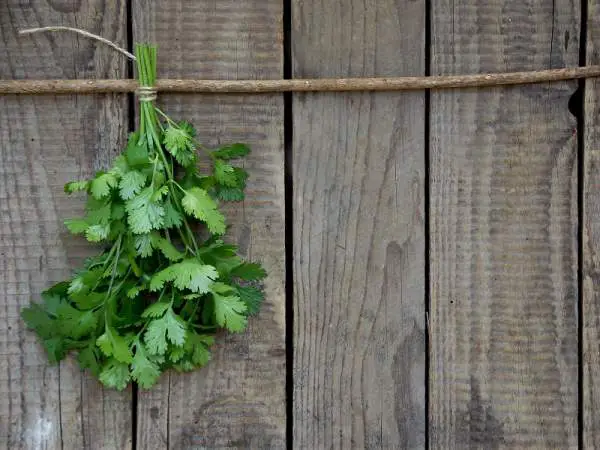
Cilantro
From seed to harvest, you’re looking at about 50-55 days for cilantro when grown hydroponically. This herb choice is very low maintenances and doesn’t require trimming. They can be harvested partially or fully.
If you’re a food lover, you already know what cilantro is great for. Toppings, garnishes, salsas, you name it. Although some people don’t prefer the taste of it, why? Many people experience the taste of cilantro differently. Some describe it as a fresh and cool taste while others think its tastes like soap. Here’s a scientific explanation of why that is.
A few tips for growing cilantro hydroponically:
- Keep the pH range between 6.5 and 6.7.
- Temperatures can remain anywhere between 40 degrees Fahrenheit up to 75 degrees Fahrenheit. However, there are faster germination rates for temperatures in the 60s.
- Watch out for powdery mildew and bacterial leaf spots, which are common with cilantro. High humidity levels and exposure to too much moisture cause these spots.
It will need plenty of water, yet it mustn’t be over-watered. Oscillating air is also recommended to replicate a sturdier outdoor habitat.
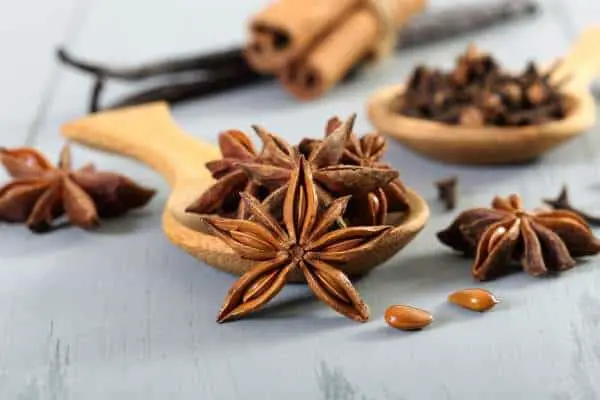
Anise
This uncommonly heard of herb has a licorice taste to it. It’s sometimes also referred to as aniseed. While Anise can fight off many common problems, other herbs also help with like digestion issues, gas, cramps, and more.
While the licorice type taste can leave it unpopular with many, it proves resourceful for flavoring bread, sausages, cookies, and cakes. Anise seedlings are very delicate and hard to transfer, so it’s best to let the seeds germinate and grow in their respective containers without moving them. You’ll find that it can take up to 2 weeks for the seeds to germinate.
You’ll want to keep the pH range from around 5.5 to 6.5. Meeting in the middle at 6.0 is the most optimal for growth. The seedlings benefit most by having an oscillating fan gently stirring the wind for a couple of hours each day.
Anise is best harvested by cutting the plant as needed and placed in a protected area free from direct sunlight in order to dry out. They can also be hung upside down. They are completely harvested as soon as the heads begin to appear brown. Store in an airtight container away from heat and light. Typically, anise will have a shelf life of up to 1 year.
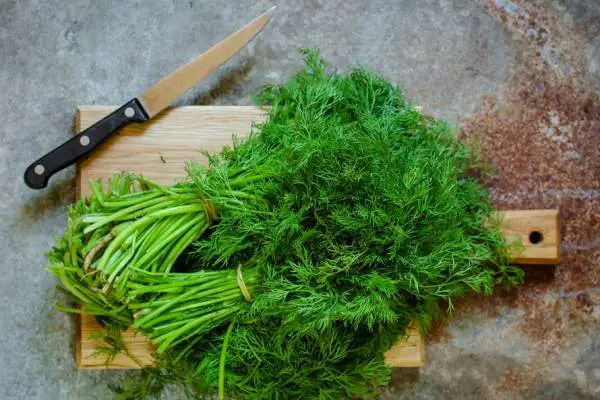
Dill
Dill is a celery family herb that grows annually. It’s most commonly seen grown in Eurasia where it is used for flavoring foods. You can use fresh dill or dried dill in your recipes. When using fresh dill, the stems are not included. Growing dill hydroponically is quite simple, and it thrives in this type of growing environment.
Tips for growing dill hydroponically:
- Place the seeds on a piece of Rockwool and press them in. Keep the Rockwool moist with water and nutrients waiting for the seeds to germinate? Germination can take 7-10 days but may happen sooner.
- After germinating, you can place the Rockwool into your hydroponic system directly. Keep the pH range between 5.5 and 7.5.
- Allow for ample room to grow and remember that dill can actually grow as tall as three feet high sometimes.
- Harvest by cutting only the leafy foliage and remove the stems when the seeds appear brown and ripe.
Culinary uses for dill include:
- Soups
- Salads
- Dips
- Casseroles
- Pickles
Medicinal uses include:
- Relieving stomach bloat and gas
- Headaches
- Cramping
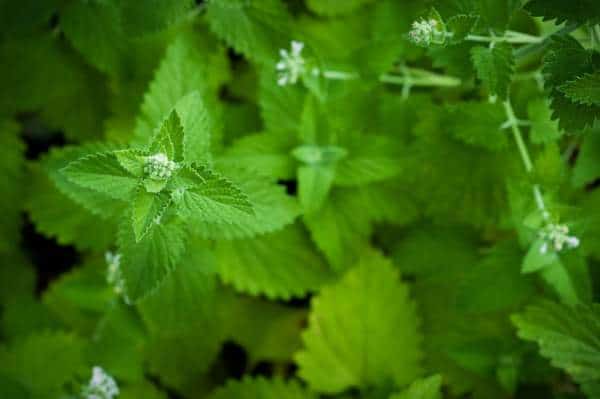
Catnip
If you have a cat, you might choose to hydroponically grow this herb mainly for their satisfaction and of course to provide some mild entertainment for yourself. Catnip though contrary to popular beliefs and the name itself is not just used for cats. Since the early 1700s, catnip has been documented for its ability to relieve cramps and indigestion when used in herbal teas.
Here are some tips for growing catnip hydroponically indoors:
- You can easily propagate catnip by using leaf-tip cuttings or seeds.
- Provide up to 5 hours of light daily.
- Supply a steady amount of water with proper drainage. Catnip can be prone to root rot, so try to avoid too wet of an environment.
- Watch out for mold growth, which can happen from too much misting.
- Remove any infestations from pests, including aphids, mealybugs, scale, and whitefly.
- Don’t let your cat come near your system!
Is it Better to Grow Herbs Hydroponically?
As always, hydroponic systems come out as top contenders do when it comes to efficiently growing plants and crops. Herbs will benefit most from the ability to receive a constant supply of nutrients and oxygen through the watering system. On average herbs, grow about 25 percent to 50 percent faster in a hydroponic environment, than in an outdoor soil environment.
Additionally, some herbs are better off fresh. Hydroponic systems give restaurants, supermarkets, and commercial growers the ability to produce fresh herbs for their customers, which allows for greater flavor and cost-efficiency.
Consider these benefits of growing your herbs hydroponically:
- You don’t need soil. While some may love the naturistic appeal of getting your hands dirty with gardening out the sunshine, the fact of the matter is, some of us prefer not to have to go that route. Hydroponic growth really only requires water and some simple mediums.
- You’ll have larger yields and faster growths. As stated earlier, you will see 25 to 50 percent faster growth in a hydroponic system than you will as an outdoor crop. This faster growth means you can yield more in a smaller amount of time.
- Less maintenance. Most hydroponic systems run on autopilot, leaving you to only check on the pH balance and refresh the nutrient solution every week.
- Herbs most commonly fall prey to pests and insects. Having an indoor hydroponic system will eliminate those threats significantly.
- You will conserve more water. Hydroponics systems, on average, only use up to 10% of the water that outdoor soil plants require. The water gets filtered and reused continuously.
- You can control the environment. Is your area prone to flooding, storms, or even frigid temperatures? You don’t have to worry about this with an indoor hydroponic system that will always be in a tightly controlled environment and safe.
- You need not use herbicides and insecticides, which means you can keep your herbs 100% organic and free of harmful chemicals.
- You will save a significant amount of space using hydroponic gardening. Systems can be customizable and even built vertically.
- Many claim that hydroponic gardening helps relieve stress. There’s also something about bringing a piece of your outdoor environment inside of your home. Having another living breathing piece of the environment near you can have positive effects on your mental health.
- It’s an all-around fun hobby to get into, what’s better than the satisfaction you get from knowing you grew a plant from start to finish, nurturing it every step of the way? Whether or not you have a natural green thumb, hydroponics is straightforward, even for beginners!
What Different Types of Hydroponic Systems Can You Use?
Ebb & Flow Systems
Ebb & Flow systems use a water tank that is kept separate from where the herb containers are. A pump will pull the water into the herb containers so they can receive the needed water and nutrients then the water drains from the containers back into the main reservoir that is then properly pH balanced, filtered, and supplied with nutrients.
Deep Water Systems
They design these systems with a beginner in hydroponics in mind. With the use of a small pump, the water in this system remains oxygenated and circulated, which is optimal for herb growth.
Aeroponic Systems
For maximum oxygen exposure to herb roots, aeroponics systems are used. These systems use a misting spray method that allows the roots to get the needed water and nutrients but keep them exposed to the valuable oxygen in the air.
Drip Systems
For a sterile approach, drip systems will feed the water and nutrients into the containers of the herbs in smaller amounts; a timer keeps the drip system on schedule and running at specific intervals.

